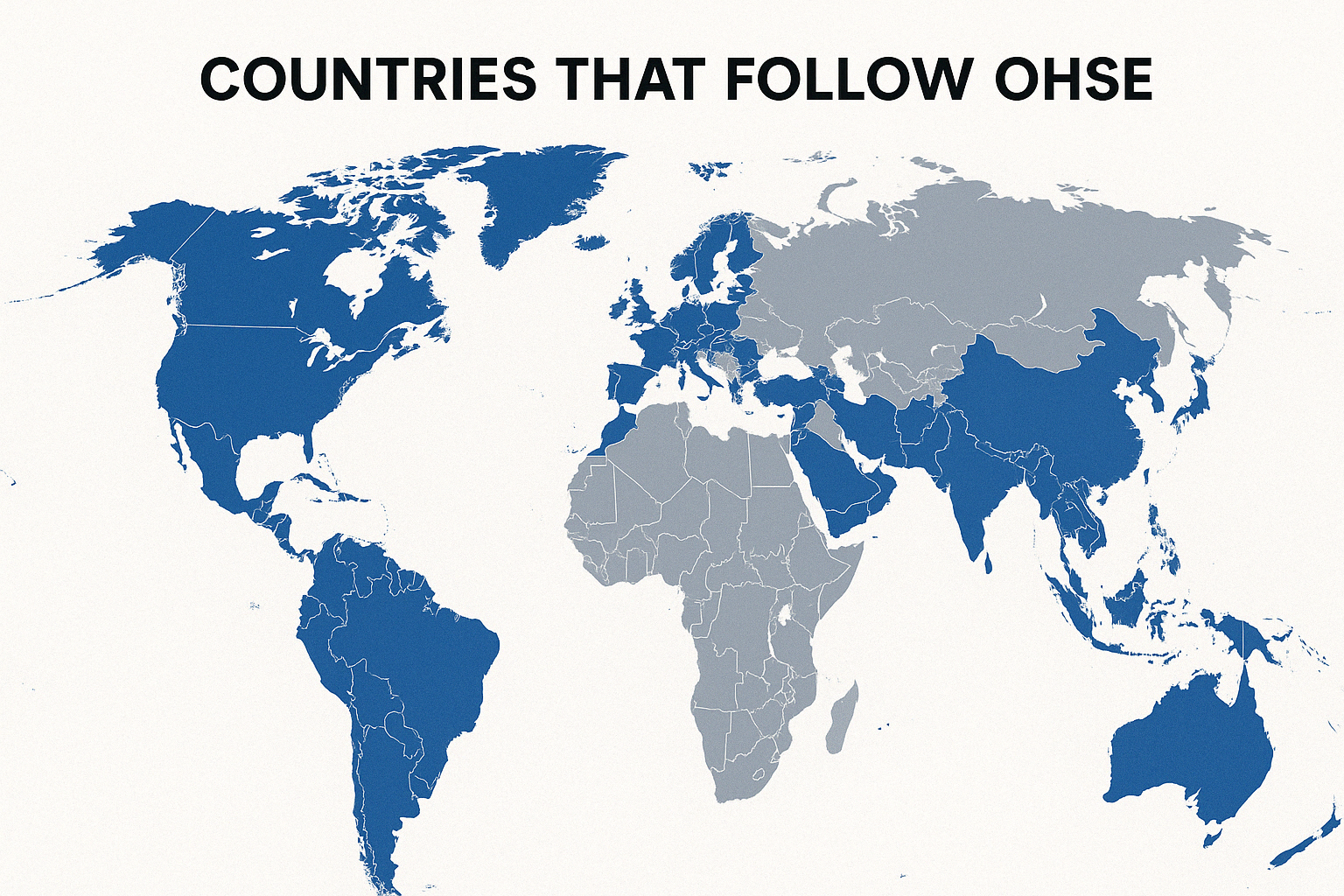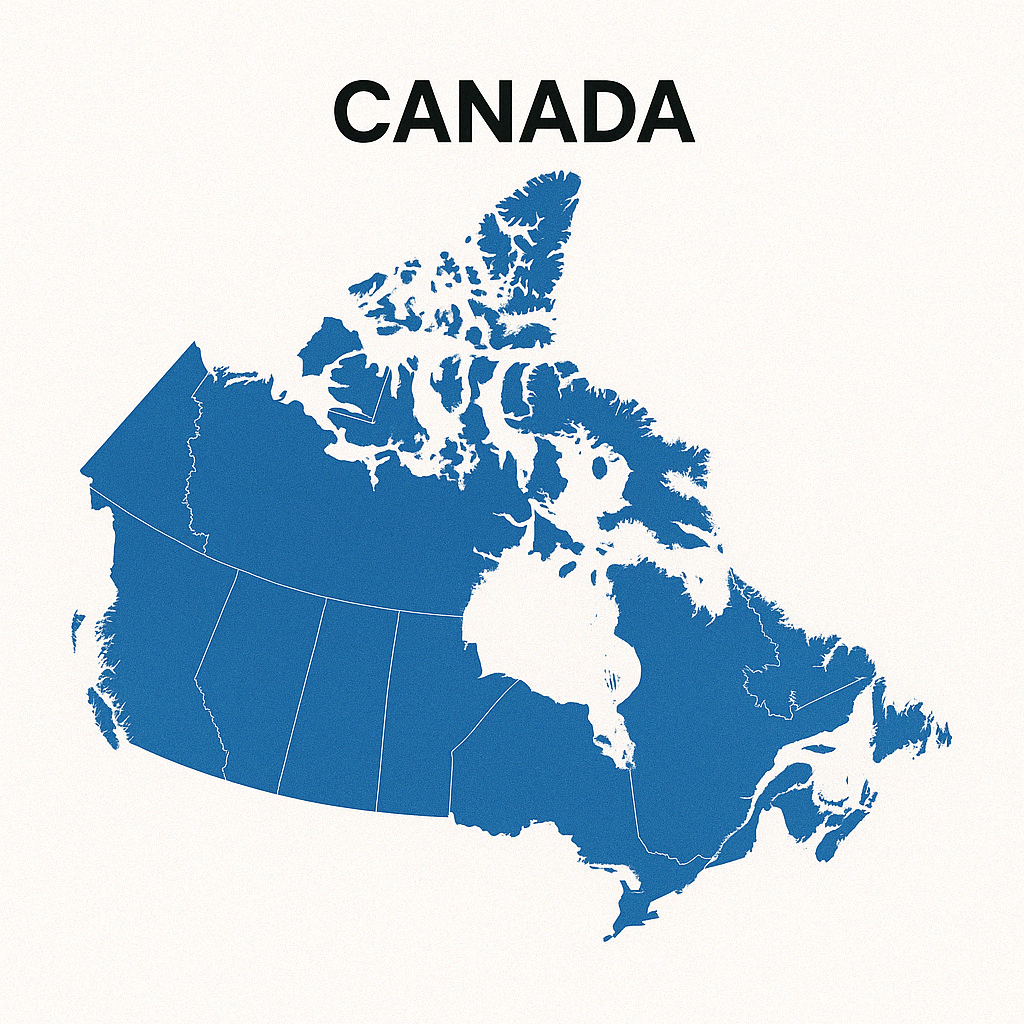Countries that follow OHSE guidelines are leading the way in protecting worker health, ensuring safe work environments, and promoting sustainable practices.
At the beginning of any effective occupational health and safety (OHSE) program is a strong regulatory framework, and around the world, nations are stepping up to ensure their workers and environments are safeguarded.

From legislation and inspections to training and enforcement, OHSE is now a global priority. Let’s explore how various countries implement and enforce OHSE and why it matters to businesses and workers alike.
Why OHSE Matters on a Global Scale
Occupational Health, Safety, and Environment (OHSE) standards are not just checkboxes—they are essential frameworks designed to minimize workplace injuries, illnesses, and environmental damage. These standards help employers manage risk, protect employees, and maintain public confidence.
The implementation of OHSE is often influenced by international organizations such as:
- International Labour Organization (ILO) (DoFollow link)
- World Health Organization (WHO)
- ISO (International Organization for Standardization)
These bodies provide guidelines and benchmarks such as ISO 45001, which is widely adopted across the world.
Countries That Follow OHSE Standards: A Global View
1. Canada
Canada enforces OHSE through both federal and provincial regulations. Agencies like CCOHS (Canadian Centre for Occupational Health and Safety) offer resources, training, and legislation support.

Each province has its own regulations, but all align with core OHSE principles. For instance, British Columbia’s WorkSafeBC and Ontario’s Ministry of Labour are recognized for their proactive inspections and worker safety programs.
Internal link: Check out resources at OHSE.ca for Canadian OHSE updates.
2. United Kingdom
The UK is one of the pioneers of occupational safety with the Health and Safety Executive (HSE). The Health and Safety at Work Act 1974 is a landmark law that laid the groundwork for many global safety programs.

OHSE practices here include:
- Risk assessments
- Employee consultations
- Regular training
- Enforcement by inspectors with authority to close unsafe operations
3. Australia
In Australia, Safe Work Australia develops national policies and model WHS laws, which are enforced by each state or territory.

This includes requirements for:
- Safety management systems
- Worker participation
- Incident notification
Australian industries such as construction and mining are heavily regulated for environmental and worker safety compliance.
4. Germany
Germany follows strict OHSE standards under the supervision of BAuA (Federal Institute for Occupational Safety and Health). The country’s safety framework integrates:
- Risk analysis
- Preventative measures
- Psychological workplace safety
- Environmental controls
Germany also complies with EU directives and harmonizes its laws with the European Agency for Safety and Health at Work (EU-OSHA).
5. United States
The Occupational Safety and Health Administration (OSHA) is the governing body in the U.S. that oversees workplace safety laws. Under the OSH Act of 1970, employers must:
- Provide hazard-free workplaces
- Maintain records of injuries
- Conduct regular training and assessments
Environmental aspects are monitored by the Environmental Protection Agency (EPA), ensuring that OHSE covers both worker and environmental concerns.
6. Japan
Japan has adopted international standards and implemented them through the Industrial Safety and Health Act. The Ministry of Health, Labour, and Welfare enforces rules such as:
- Mandatory health checks
- Heat and chemical exposure control
- Machine safety protocols
Japan places a high emphasis on safety culture and continuous improvement.
7. Norway
As one of the safest countries for workers, Norway’s Labour Inspection Authority enforces rules on:
- Worker rights
- Safety training
- Ergonomics
- Psychological health
OHSE is deeply rooted in both employer responsibilities and worker empowerment.
8. Singapore
Singapore is known for its strong OHSE enforcement via the Workplace Safety and Health Council (WSHC). Key initiatives include:
- Vision Zero strategy
- Industry-specific codes of practice
- Safety performance awards
Singapore also aligns its practices with international standards like ISO 45001.
Countries with Emerging OHSE Frameworks
Many developing countries are strengthening their OHSE systems. Nations such as India, Brazil, South Africa, and Malaysia are improving legislation and enforcement.
With support from ILO and ISO standards, these countries are developing robust workplace safety cultures.
For example:
- India’s Factories Act mandates safety in industrial settings.
- South Africa’s OHSA promotes both worker health and environmental protections.
Global Standards Shaping OHSE
A few international standards that shape OHSE efforts worldwide:
- ISO 45001 – Occupational Health and Safety Management Systems
- ILO Convention No. 155 – Occupational Safety and Health and the Working Environment
- ILO Convention No. 187 – Promotional Framework for Occupational Safety and Health
These help countries benchmark their safety performance and harmonize legal frameworks.
Note on Enforcement and Culture
While many countries follow OHSE standards, enforcement levels and workplace safety culture can vary significantly.
A country may have excellent laws on paper, but without enforcement and training, workplace hazards remain. Thus, education, inspections, and worker participation are key components.
Countries That Follow OHSE Lead the Way in Worker Safety
Countries that follow OHSE standards demonstrate a commitment to the well-being of their workforce and environment.
Whether it’s through rigorous inspections in Germany, education programs in Canada, or zero-harm targets in Singapore, the benefits are clear—safer workplaces, healthier workers, and more sustainable industries.

Understanding which countries prioritize OHSE can help global companies navigate compliance, improve operations, and foster an international safety culture. As regulations evolve, staying informed on global OHSE practices is essential.

No comments yet